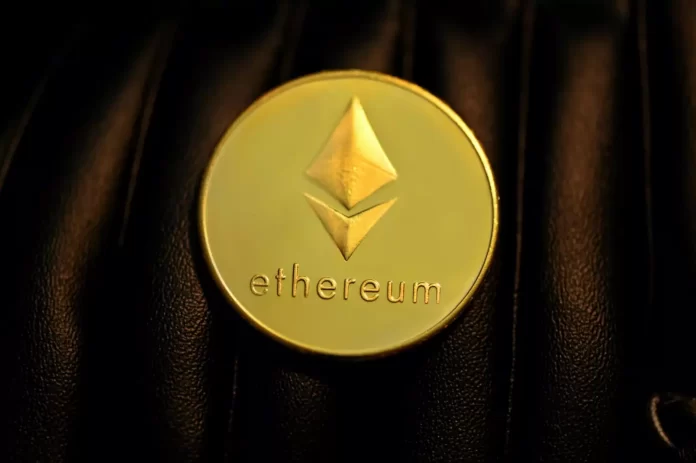The Ethereum protocol is well-established in many aspects. Ethereum’s long-planned update is designed to improve the scalability and security of the network by moving to a consensus mechanism based on proof of stake.
What do you need to know about Ethereum 2.0
Bitcoin boasts the highest capitalization among cryptocurrencies, but Ethereum is home to the world’s largest blockchain ecosystem. And all thanks to supporting smart contracts: software code that is automatically executed when certain conditions are met, without intermediaries. In fact, all blockchain apps (decentralized crypto exchanges, games, loan protocols, NFT tokens, etc.) run on smart contracts.
In particular, DeFi decentralized finance contracts and other apps are now being built on this network. Since the Ethereum network is very popular, it’s also experiencing heavy loads. As a consequence, Ethereum cannot cope with a large influx of transactions, and transactions are slow. As a result (this is inherent in the Ethereum protocol), the commission for transferring money within the network (the so-called “gas” or gas fee) grows.
In order to improve network scalability, security, and energy efficiency, the developers decided to implement Ethereum 2.0. So, here’s what you should know about Ethereum 2.0.
What is Proof-of-Stake in the Ethereum network
The transition to the new protocol will take place in four phases. During phase zero, the Proof-of-Stake (PoS) consensus in the Beacon Chain signaling blockchain was deployed and its functionality was tested. The Beacon Chain acts as a test network in which blockchain validation and stacking will be performed, as well as the methodology for calculating the cost of gas and forming commissions will be revised. In the future, the Beacon Chain will coordinate the work of all subordinate elements (shard chains and the main current PoW network).
The Proof-of-Work (PoW) algorithm in the Ethereum network, as in other networks, involves miners solving cryptographic tasks to form a block. Accordingly, the first one who solves the task gets new tokens – ETH – to his account. This consensus implies high power consumption in the network because the equipment requires energy for its operation. Scalability (the ability of the network to perform more transactions) suffers as well since scaling implies the introduction of new mining capacities.
To solve this problem, the developers introduced the Proof-of-Stake consensus algorithm, which was launched as a test mode on December 1, 2020. As part of this consensus, new participants – validators – appeared on the network, who check transactions (validation) at the expense of their assets in ETH and receive new tokens for it.
What are the four phases of the transition to the new Proof-of-Stake algorithm in the Ethereum network
Developers plan to make the transition to the new PoS algorithm in four stages:
- Phase 0 – Beacon Chain.
- Beacon Chain is a new blockchain in the Ethereum network that is a Proof-of-Stake validation.
- This blockchain assigns validators and monitors their work, selects the creator of the next block, and distributes rewards for validation and network performance.
- Phase 1 – Sharding.
- At this stage, more blockchains will be added to the network, 64 of them. These will be so-called Shard Chains (“shards” or scaling blockchains).
- After the launch of this stage, there will be 65 blockchains in the network, with Beacon Chain being the main one and playing the role of “overseer”.
- The other 64 shards will be used to scale the network.
- While Ethereum now has only one blockchain, in the future there will be 65, which will increase the throughput of the entire network by orders of magnitude.
- Phase 1.5 – Merging the PoW blockchain with the new PoS blockchain.
- At this stage, PoW blockchain will be just one of many blockchains in the new, unified network. The PoW blockchain will no longer support the Proof-of-Work mechanism.
- According to the developers’ idea, the current PoW-blockchain will become just one of the new network’s shards, a data repository.
- Phase 2 – transition to the new mode of operation.
- At this stage, developers plan to introduce smart contracts into ETH 2.0 and offer third-party developers their own standard for creating their coins and contracts.
- Smart contracts already work in ETH 1.0.
As for the full transition to Ethereum 2.0, there’s no exact date yet. Roughly, it will happen in 2022 or 2023.
How to participate in ETH 2.0 staking
To become a validator and “stake” ETH yourself, you need to put at least 32 ETH into the staking pool (node). After that, the validator begins to participate in the creation of new blocks and receives a reward in ETH for validation. In the new consensus, the remuneration will be smaller than in the old PoW protocol, since it eliminates the need to compensate the energy costs of the miners. In addition, the PoS consensus provides for the burning of a portion of transaction fees, which will affect the total number of Ethers in circulation and their price.
And the amount of reward will depend on the total number of ETH in the pledge of validators: the more coins are blocked, the less will be the reward. This is done so that when the number of “stakers” grows a lot, new ones won’t come (it’s just not necessary), and when the number of “stakers” decreases, new ones will be interested in coming, to keep the network running.
This bounty scheme is designed to motivate users to become validators at the beginning and thus protect the network. Then, as the number of validator nodes grows, the yield from staking will drop (see figure below), because the network will already be sufficiently protected. At the same time, fewer people will want to become validators, finding uses for their Ethers in DeFi protocols, for example. In this way, DeFi and Staking will compete with each other in terms of profitability, but, in doing so, support and reinforce each other.
Tab-TV doesn’t provide any investment, money management, or trading advice.





